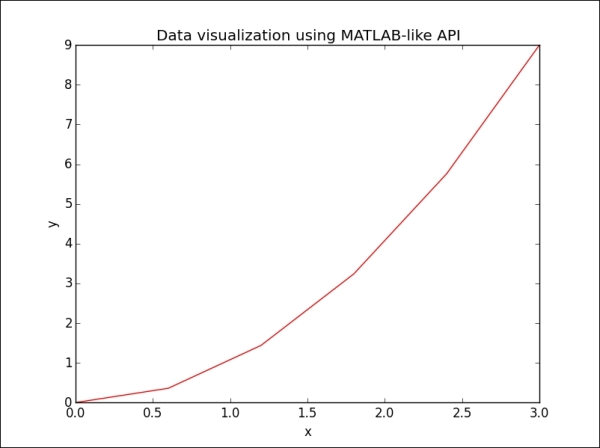The easiest way to get started with plotting using matplotlib is often by using the MATLAB API that is supported by the package:
>>> import matplotlib.pyplot as plt >>> from numpy import * >>> x = linspace(0, 3, 6) >>> x array([0., 0.6, 1.2, 1.8, 2.4, 3.]) >>> y = power(x,2) >>> y array([0., 0.36, 1.44, 3.24, 5.76, 9.]) >>> figure() >>> plot(x, y, 'r') >>> xlabel('x') >>> ylabel('y') >>> title('Data visualization in MATLAB-like API') >>> plt.show()
The output for the preceding command is as follows:

However, star imports should not be used unless there is a good reason for doing so. In the case of matplotlib, we can use the canonical import:
>>> import matplotlib.pyplot as plt
The preceding example could then be written as follows:
>>> plt.plot(x, y) >>> plt.xlabel('x') >>> plt.ylabel('y') >>> plt.title('Data visualization...



